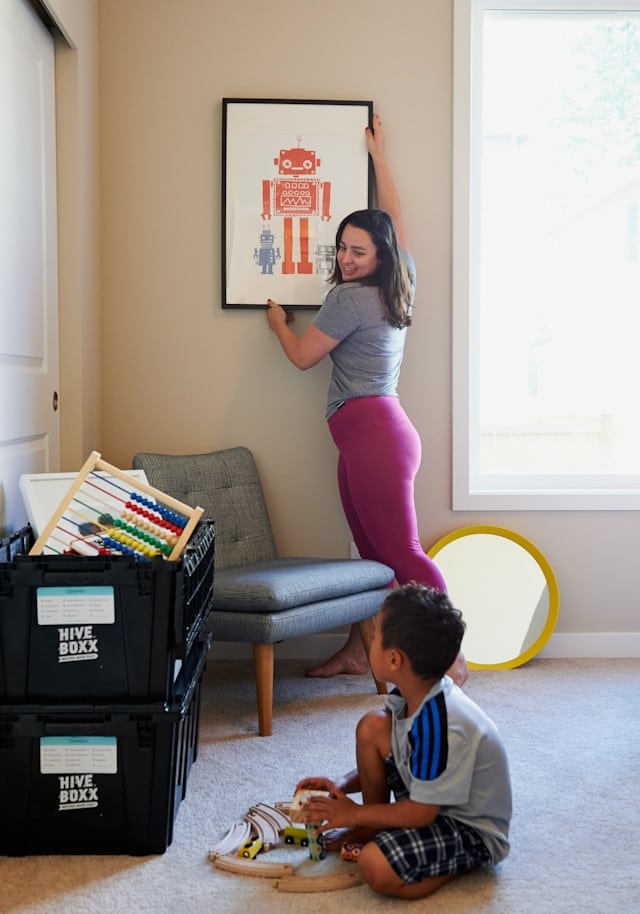In the quest to create a comfortable and efficient home sewing studio, ergonomics play a vital role. This science of work examines how tools, equipment, and the environment interact with the human body, focusing on making tasks easier, safer, and more efficient. For those passionate about sewing, quilting, or any other form of crafting, applying ergonomic solutions can make a significant difference in their productivity, comfort, and overall joy in their craft. In this article, we will guide you through the top ergonomic solutions, covering topics of working space, storage, tools, cutting, height, lighting, and machine setup.
The Importance of the Crafting Space
The first step in setting up an ergonomic sewing studio is to carefully consider your crafting space. The room you choose to work in should be spacious enough to accommodate all your crafting tools and provide ample space for movement. It should also be well-ventilated and have a good amount of natural light.
Also read : How to Design a Space-Saving Guest Sleeping Area in a Home Office?
A clutter-free and organized workspace is essential for a seamless workflow. Ensuring that you have enough table and storage space will help you keep your tools and materials within easy reach. Your work table should be large enough for laying out and cutting fabric. If possible, opt for a table with adjustable height for added comfort and flexibility.
Storage solutions are a crucial part of an ergonomic sewing room. Having dedicated spaces for your tools, materials, and work-in-progress projects will save you time and reduce frustration. Consider using storage bins, drawers, or shelving units to keep your room tidy.
Also to read : How Can You Incorporate Modern Minimalism into a Historical Home’s Library?
Crafting Tools and Their Ergonomics
The tools you use in your sewing studio can greatly impact your comfort and efficiency. Ergonomically designed tools reduce the strain on your hands and wrists, making your crafting time more enjoyable and productive.
When choosing your tools, look for ones with comfortable grips, suitable weights, and easy-to-use mechanisms. For instance, spring-loaded scissors can reduce hand fatigue, while a rotary cutter with a cushioned grip can make cutting fabric a breeze.
Sewing machines should also be chosen with ergonomics in mind. The machine should be at a comfortable height, with the needle at eye level to avoid neck strain. The pedal should be easy to reach and operate with your foot.
Cutting with Comfort and Efficiency
Cutting is an integral part of sewing that can be physically demanding. The repetitive motion of cutting can strain your hands and wrists, while bending over a low table can cause back and neck discomfort.
To make the cutting process more ergonomic, use a cutting table that is at waist height, allowing you to cut fabric without having to bend over. A rotary cutter with a comfortable grip can help reduce hand strain. Using a self-healing cutting mat can also make the cutting process smoother and protect your table surface.
The Role of Lighting in an Ergonomic Sewing Studio
Lighting is a critical factor in creating an ergonomic sewing studio. Insufficient lighting can strain your eyes and make it difficult to see detail, while harsh lighting can cause glare and discomfort.
Natural light is ideal for any crafting room. If possible, set up your sewing studio in a room with large windows. For artificial lighting, choose a bright, daylight-balanced light that closely mimics natural light. Desk lamps with adjustable arms can be positioned to shine light exactly where you need it.
The Height Factor: Keeping Your Posture in Check
One of the essential elements of an ergonomic sewing studio is the height of your work surfaces and seating. Working at a height that’s either too high or too low can lead to discomfort and strain on your neck, back, and shoulders.
Your sewing machine and cutting table should be at a height that allows you to work without hunching over or stretching your arms too high. An adjustable chair that supports your back and allows your feet to rest flat on the floor can provide additional comfort and support.
Setting up an efficient and comfortable sewing studio is a rewarding project that will enhance your crafting experience. By considering the elements of space, storage, tools, cutting, lighting, and height, you can create an ergonomic environment that supports your passion for sewing.
The Essentials of the Ironing Board and Sewing Surface
The ironing board and sewing surface are indispensable elements of a crafting room. Ensuring that these are ergonomically designed can significantly enhance your sewing experience and reduce physical discomfort.
The ironing board should be at a height that enables you to iron without bending down or straining your back. An adjustable ironing board is a good option as it allows you to customize the height as per your needs. Additionally, going for an ironing board with a wide surface area can provide you with ample space to handle larger fabrics and projects.
For the sewing surface, opt for a sewing table that is at a comfortable working height. This will help you avoid neck and shoulder strain. The sewing table should also have enough space to accommodate your sewing machine and other sewing supplies. If possible, choose a table with built-in storage solutions, such as drawers or shelves, to keep your tools and materials organized and within easy reach.
An ergonomic sewing table is one that is designed with comfort and efficiency in mind. It may have features such as adjustable height, ample work surface area, and integrated storage solutions. Investing in a good quality sewing table can make a world of difference in your sewing ergonomics.
Lighting and Its Effects on Eye Strain
One of the common issues that crafters face is eye strain due to inadequate or poorly positioned lighting. Both natural and artificial light are important in a craft room to prevent this.
As mentioned earlier, natural light is best for any crafting activity. However, if your sewing room does not have access to ample natural light, you can supplement this with good quality artificial task lighting.
Task lighting is a type of focused light that illuminates a particular area where a task is performed. In your sewing room, this could be your sewing table or cutting table. Task lighting can help reduce eye strain and increase visibility, making it easier to see details and perform tasks accurately.
When choosing your task lighting, opt for lights that mimic the brightness and color temperature of natural light. Adjustable lights are a great choice as they allow you to direct light exactly where you need it. Remember that the best ergonomic lighting solution is one that provides even, shadow-free lighting without causing glare.
Conclusion
Creating an ergonomic sewing studio at home involves careful planning and consideration of various factors such as the crafting space, storage solutions, tools, cutting table, sewing machine, ironing board, and lighting. By paying attention to each of these elements, you can craft a sewing space that is not only comfortable and efficient but also a joy to work in.
Remember that the goal of sewing ergonomics is to reduce strain and discomfort, improve productivity, and enhance your overall sewing experience. Whether you are setting up a new sewing room or upgrading an existing one, these ergonomic solutions can make a substantial difference.
In summary, investing in a spacious and well-ventilated craft room, ergonomic tools, an adjustable cutting table and sewing table, sufficient natural light, and efficient storage solutions can significantly enhance your home sewing studio. Happy crafting!











